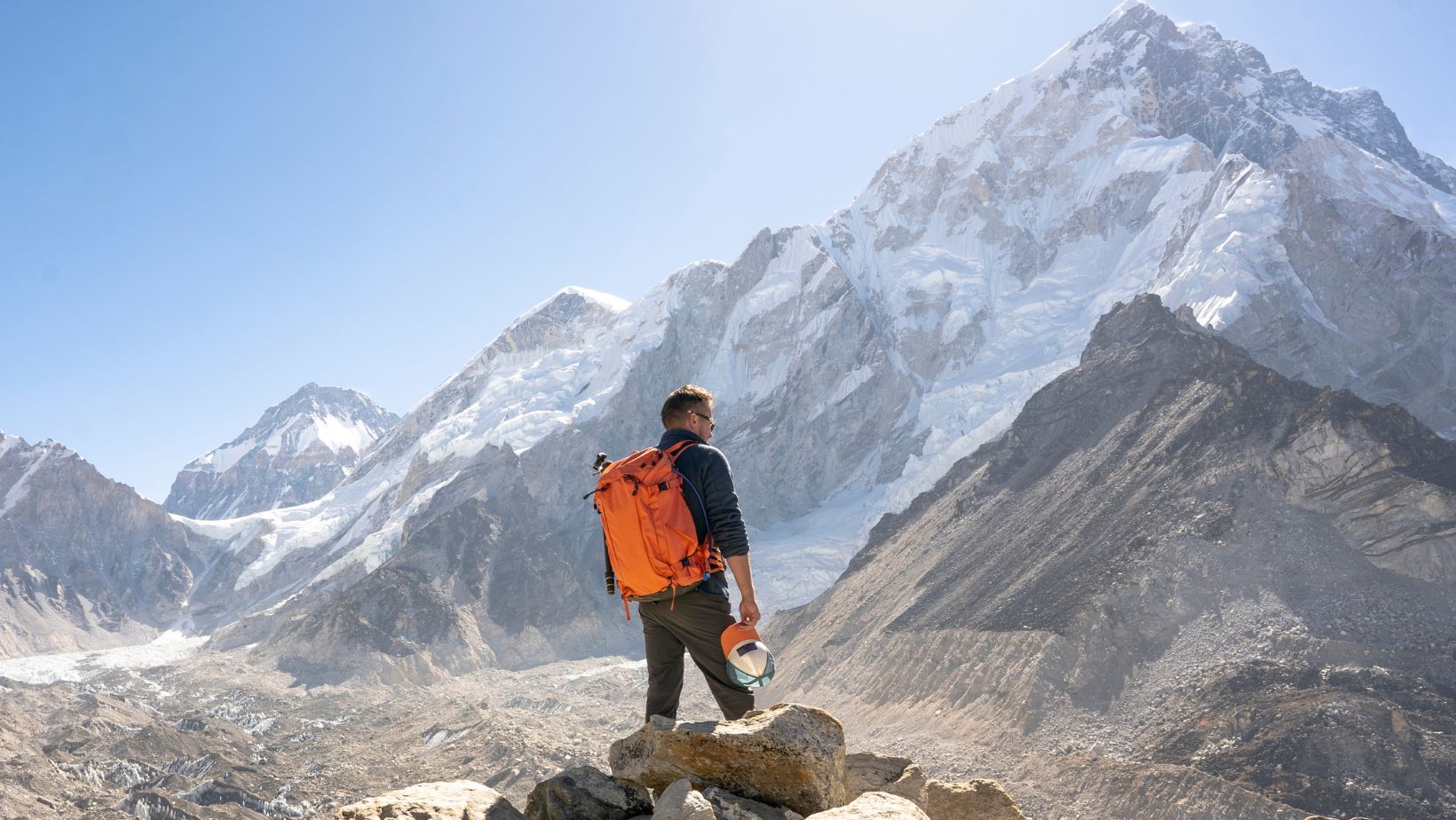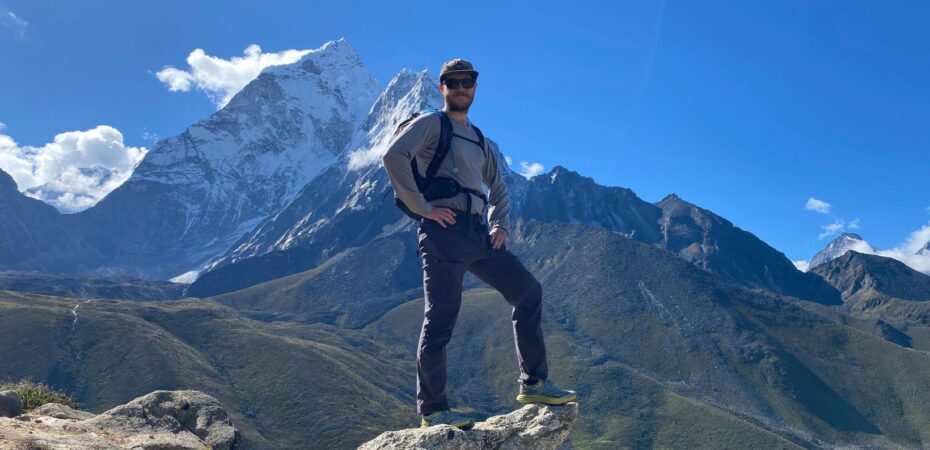Everest Base Camp Trek vs Langtang Valley Trek—two iconic Himalayan journeys, but which one should you choose?
If you’ve found yourself torn between these two legendary treks, you’re not alone. Maybe you’ve been dreaming about standing beneath Everest but feel unsure about the altitude. Or perhaps you’ve heard whispers of Langtang’s lush forests and cultural richness, but wonder if it’s “less epic” than Everest. The truth is, both treks offer something incredible—yet entirely different.
Choosing the right trek matters. Your time, budget, fitness level, and travel goals all play a role. Pick the wrong one, and you might miss out on the experience you truly wanted. This blog post compares the Everest Base Camp Trek and Langtang Valley Trek across all the factors that count—difficulty, scenery, cultural experience, cost, and more—so you can make a confident, informed decision.
Whether you’re a first-time trekker or a returning Himalayan explorer, this guide will help you match the right trail to your adventure style.
Trek Overview: Everest Base Camp vs Langtang Valley
What is the Everest Base Camp Trek known for?
The Everest Base Camp Trek is famous for its iconic status. You walk in the footsteps of mountaineering legends while soaking in jaw-dropping Himalayan views. Trekkers are drawn by the dream of standing face-to-face with the world’s tallest mountain.
The trail passes through classic Sherpa villages, prayer-flag-draped stupas, and bustling towns like Namche Bazaar. You also get the chance to visit Tengboche Monastery and witness dramatic glacier and peak landscapes. It’s not just a trek—it’s a cultural and high-altitude adventure.
Why do trekkers choose the Langtang Valley Trek?
Langtang Valley Trek offers a quieter, greener alternative. It’s known for its close proximity to Kathmandu, stunning alpine scenery, and strong Tamang cultural presence. This region was heavily affected by the 2015 earthquake but has since been rebuilt and remains welcoming.
Langtang rewards trekkers with bamboo forests, rhododendron blooms, and wide glacial valleys. The views of Langtang Lirung and surrounding peaks are spectacular, and you’ll often feel immersed in nature without crowds.
Key differences between Everest and Langtang regions* Popularity: EBC sees far more trekkers annually.
- Altitude: Everest reaches higher elevations.
- Culture: Sherpa in Everest vs Tamang in Langtang.
- Scenery: Both are stunning, but Langtang is more forested early on.
- Access: Langtang is road-accessible; Everest requires a flight.
Trek Duration and Difficulty Compared
How many days does each trek take?
- Everest Base Camp Trek: Typically 12-14 days round trip from Lukla.
- Langtang Valley Trek: Generally 6-10 days round trip from Syabrubesi.
Everest requires more time due to acclimatization stops and longer trails. Langtang is shorter and better suited for those on tight schedules.
Which trek is more physically demanding?
Everest is significantly more demanding. The trails are steeper and the elevation gain is greater. You’ll reach 5,364 meters at Base Camp.
Langtang is easier in terms of altitude and terrain. It tops out around 4,000 meters at Kyanjin Ri (or 4,773m if you climb Tserko Ri).
Altitude challenges and acclimatization tips
EBC presents a real risk of altitude sickness. Acclimatization days in Namche and Dingboche are essential.
Langtang has a gentler elevation gain, but altitude precautions still matter. Spending an extra day in Kyanjin Gompa helps adjust.
Drink water, ascend slowly, and listen to your body. Diamox can also help prevent symptoms in both treks.
Getting There: Access and Logistics
How do you reach the Everest and Langtang trailheads?
- Everest: Fly from Kathmandu to Lukla (30-40 mins)
- Langtang: Drive from Kathmandu to Syabrubesi (6-8 hours by jeep or bus)
Flights to Lukla are thrilling but weather-dependent. Road access to Syabrubesi can be bumpy but more reliable.
Which trek is more accessible from Kathmandu?
Langtang wins for accessibility. You can start the trek within a day’s drive.
EBC relies on the flight to Lukla, which can be delayed due to fog or wind. During peak season, flights might operate from Ramechhap instead of Kathmandu, adding travel time.If you prefer overland travel, Langtang is the way to go.
Culture and Community: Sherpa vs Tamang
Sherpa culture along the Everest route
The Everest region is Sherpa country. You’ll see prayer wheels, chortens and mani walls everywhere.
Sherpas are mountaineers and Buddhists. Don’t miss Tengboche Monastery, especially during Mani Rimdu festival season.
Staying in family run teahouses gives you a glimpse into daily life in the Khumbu.
Tamang heritage in the Langtang region
Langtang is Tamang country, one of Nepal’s oldest ethnic groups. The culture here is a mix of Tibetan Buddhism and local traditions.
You’ll visit villages where homes are carved with wood and locals will invite you in for yak butter tea.
The cultural immersion is richer and more personal with fewer tourists.
Monasteries, festivals and local interaction
Both treks have festivals. In Langtang you might see traditional dances during Buddha Jayanti. In the Everest region Mani Rimdu is the highlight.
Monasteries are along both routes, a spiritual pause on the trail. Local interaction is easier in Langtang due to its more intimate vibe.
Scenery and Natural Diversity
What kind of landscapes will you see on each trek?
- Everest: Peaks, moraine valleys, alpine deserts.
- Langtang: Forests, waterfalls, glacier carved valleys.
Everest is all about high altitude views. Langtang has more ecological variety, especially lower down.
Wildlife and flora differences
Langtang is part of Langtang National Park. Look out for red pandas, langurs and colorful pheasants.
Everest is in Sagarmatha National Park. You may see Himalayan tahrs, musk deer or even a snow leopard if you’re lucky.
Langtang has more forested areas, Everest becomes alpine earlier on. Spring brings rhododendron blooms to both regions.
Cost and Value for Money
Is Everest more expensive than Langtang?
Yes. The Everest Base Camp Trek costs more due to flights, higher permit fees and remote logistics.Langtang is more budget-friendly. No flights are required and prices for food and accommodation are lower.
A guided Everest trek can cost USD 1,200–2,000+. Langtang can cost USD 600–1,200 depending on the itinerary.
What do you get for the price?
EBC offers prestige, views and high altitude thrill. Langtang offers value, culture and nature.
Both treks provide teahouse accommodation, meals and guides if you go through an agency. Tips and permits are extra.
Langtang gives you more for your money if you’re after quiet beauty and cultural depth.
Best Time to Trek in Each Region
Seasonal weather patterns
- Best for Everest: March–May and late September–November.
- Best for Langtang: Similar windows, though Langtang stays greener longer.
Summer (June–August) brings monsoon rains. Winter (December–February) means snow and cold.
When to avoid trekking (monsoon/winter)?
Avoid monsoon in both regions—slippery trails, leeches and landslides make trekking risky.
Winter is possible with good gear but many teahouses close. Everest is colder than Langtang.
Shoulder seasons (March and October) are ideal—fewer crowds, clear skies and moderate temps.
Trekking Style and Accommodation
What kind of accommodation is available?
Both treks offer teahouse style lodging. These are basic but comfortable with twin beds, blankets and shared toilets.
In Everest teahouses in places like Namche or Dingboche can be more developed. In Langtang they’re simpler but welcoming.
Hot showers, Wi-Fi and electricity may cost extra in both.
Crowds and trail traffic comparison
Everest can be crowded, especially in peak seasons. Trails, lodges and viewpoints can feel busy.
Langtang is much quieter. You can often hike for hours without seeing other trekkers.
If solitude matters to you, Langtang offers a more peaceful trekking experience.
Solo vs guided trekking options
Guided treks are popular for both routes. They ease logistics and provide cultural insight.

Solo trekking is possible and legal in Langtang, but not currently in Everest due to new regulations.If you prefer self-guided adventures, Langtang gives more freedom.
Which Trek Is Right for You?
Who should choose Everest Base Camp Trek?
Choose Everest if:
- You want iconic views and stories to tell.
- You’re fit and ready for altitude.
- You don’t mind crowds.
It’s a bucket-list trek but demands more physically, financially and logistically.
Who should consider Langtang Valley Trek instead?
Choose Langtang if:
- You want a shorter, easier trek.
- You enjoy quiet trails and forest scenery.
- You’re looking for cultural immersion.
Langtang is perfect for first-timers, families and anyone seeking authenticity over adrenaline.
Final decision-making tips based on goals, time and budget
- Time-crunched? Go Langtang.
- Chasing glory? Pick Everest.
- On a budget? Langtang wins.
- Worried about altitude? Langtang is safer.
- Love big mountains and iconic places? Everest delivers.
Match the trek to your personal adventure goals.
Final Thoughts: Everest vs Langtang—Two Epic Journeys, One Nepal
There’s no wrong choice here. Both the Everest Base Camp Trek and the Langtang Valley Trek offer unforgettable Himalayan adventures. They each reflect Nepal’s beauty, resilience and cultural richness in their own unique ways.If you want to stand beneath Mount Everest, surrounded by big mountains and ancient monasteries then Everest Base Camp is the trip for you. It’s a challenging and rewarding trek for those who want to achieve at high altitude.
If you prefer quieter trails, personal encounters with local communities and varied natural scenery then Langtang Valley is your haven. It’s more accessible, less crowded and more immersive in nature and culture.
Whatever you choose, iconic Everest or serene Langtang, you’ll return with a greater love for the mountains and the people who live in them. One trek will push you to your limits; the other will restore your soul. Either way, Nepal’s Himalayas will welcome you with open arms.






